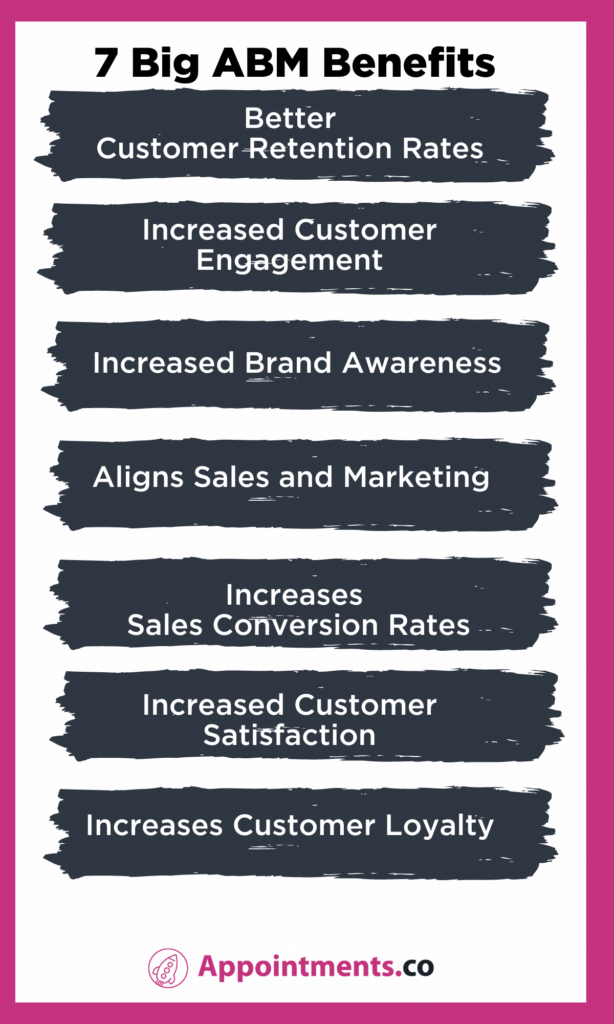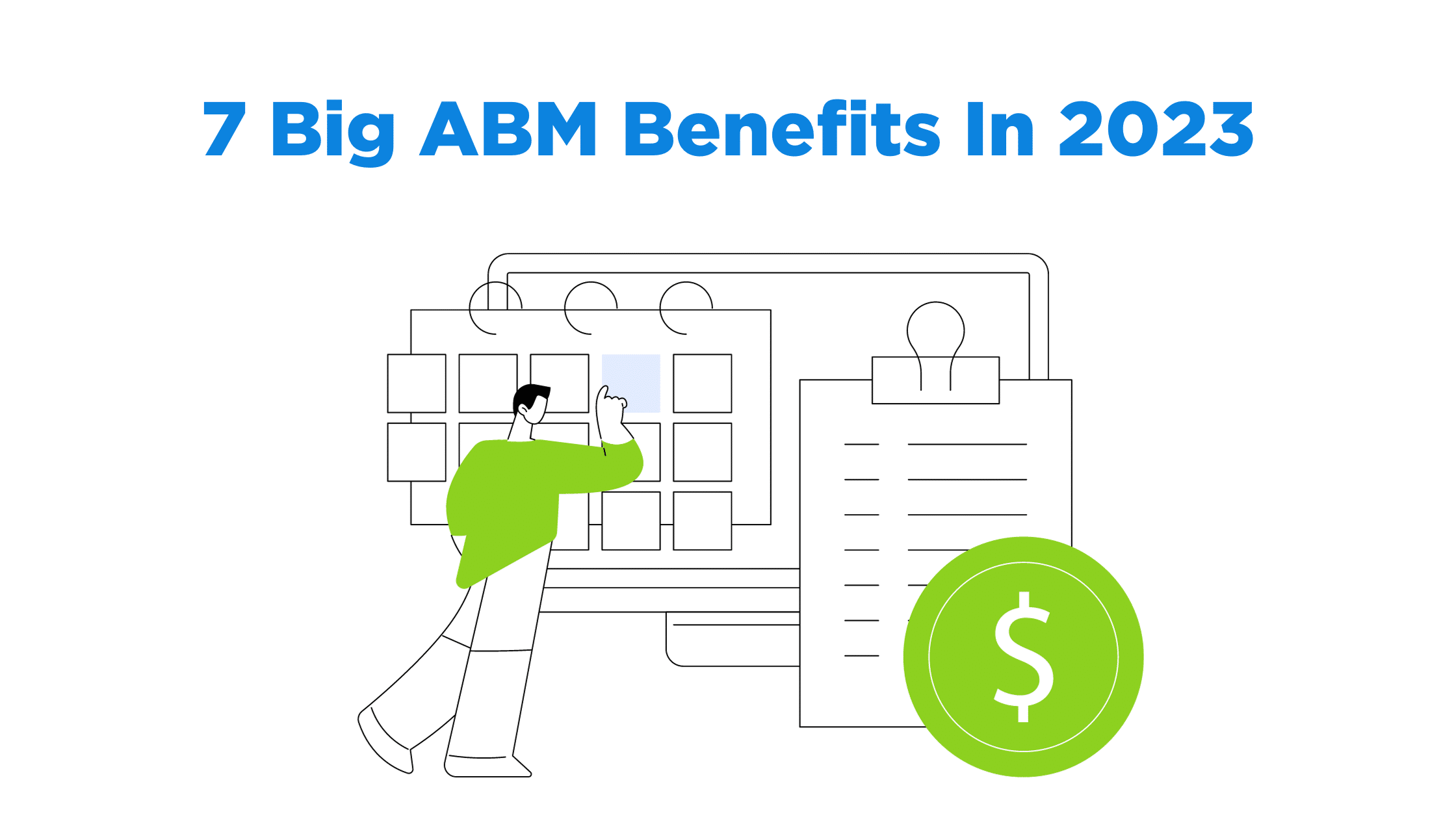ABM benefits are better known to marketers. WebFX says that 94% of B2B marketers are aware of the ABM Benefits and utilizing this technique in their business. This account-based marketing is a scrutinized way of marketing that builds a tailored strategy for the target market. This article lists a few ABM benefits. Businesses are always looking for ways to boost year-end profits. Selecting the best marketing plan for your business is crucial. After all, a great product without marketing is meaningless.
The best marketing plans can help a company grow and achieve its goals. Your business’s marketing approach must also reflect its goals and values. A strong marketing plan should focus on creating relationships with potential customers by giving them the information they need to make an informed purchase decision. Based on this, account-based marketing is a great business growth strategy.
What Is an Account-Based Marketing Strategy?
Account-based marketing emphasizes customer relationships. Account-based marketing aims to understand customers’ wants, needs, and behaviors. So, the business can determine its particular demands, and build products or services to fulfill them.
Hence, account-based marketing involves building customer relationships based on past business experiences. Companies must understand how customers use their products and services and why they buy them.
Account-based marketing emphasizes customer relationships, rather than product attributes.
The 7 Top ABM Benefits

#1 – Better Customer Retention Rates
One of the ABM benefits is that it improves client identification, engagement, and retention. Account-based marketing helps companies identify customer needs, and establish relationships around them. This allows them to give excellent customer service and support.
Account-based marketing’s cross-channel consistency decreases client attrition. Promoting smooth digital interactions can boost client retention. It also helps you keep customers by making them feel valued as part of your brand’s success.
#2 – Increased Customer Engagement
Increased customer engagement is one of the most critical ABM benefits of account-based marketing strategies. When you offer personalized content and content that’s relevant to your customers, they’re more likely to engage with it than if you were sending them generic messages.
Account-based marketing allows you to reach clients without paying for TV, radio, or direct mail. Email, social media, and chatbots can rapidly tell customers about new products, sales, and special deals.
#3 – Increased Brand Awareness
Another effective ABM benefits is it has the potential to create an awareness among the public. As you know, account-based marketing involves connecting with customers on a deeper level than ever before. This helps your business build a long-term partnership.
Customers and businesses learn more about each other, which raises brand recognition for everyone. Customers can discuss issues with someone in your company who knows them well. This implies that they will go above and beyond to fix the problem themselves (and hopefully refer others).
#4 – Align Sales and Marketing
Account-based marketing align sales and marketing by creating sales-based customer goals. Account-based marketing relies on CRM tools to better understand clients. With this knowledge, personalized communications and offers can create customer demand.
Account-based marketing aligns sales and marketing, improving outcomes for both. Both teams can find opportunities by focusing on clients rather than prospecting. This helps marketers understand their customers’ needs and can create messages that resonate.
#5 – Increases Sales Conversion Rates
Another ABM benefit is it emphasizes consumer relationships. Building a long-term relationship with clients is vital, so they don’t hesitate to buy from you again.
Social media and content marketing make it easier than ever to engage with your audience.
Account-based marketing boosts sales by engaging customers. It also strengthens customer ties, making them more likely to return. It keeps customers interested long enough to buy, by providing relevant content.
#6 – Increased Customer Satisfaction
Customer satisfaction is an essential aspect of your business. If your consumers are unhappy, you won’t attract new ones. Returns and referrals indicate consumer satisfaction.
Account-based marketing (ABM) creates a customer-centric experience driven by customers. It’s about product selection, customer service, and relevant information.
Account-based marketing promotes customer happiness by providing real-time solutions. Instead of selling items and services, they can learn about their customers, provide value, and advocate for their needs.
#7 – Increase Customer Loyalty
Brand loyalty is a long-term commitment to one brand. Brand loyalty boosts sales, customer service, and customer retention. Yet, brand loyalty is built through marketing. This means that if you want to build brand loyalty, you must use successful marketing methods.
Account-based marketing builds brand loyalty best (ABM). Account-based marketing targets current customers with comparable needs and delivers products and services at the right time. As these potential consumers become loyal customers, it can strengthen your relationship.
Tips for Implementing an Account-Based Marketing Strategy
Decide on Targets
Analyze your target market to find possible accounts and clients. You can do this by using the PESTLE (political, economic, social, technological, legal, and environmental) analysis. This tool is great for identifying your target market’s needs and aspirations.
After identifying your target market, learn what drives and challenges them. Use qualitative and quantitative data to gather this information. High-value accounts can be prioritized by revenue potential, market influence, and purchase potential using all available technology.
Get to Know Your Target Audience
Your targets are the people or companies you want to reach with your advertising. They may be customers, prospects, or influencers. They may be people who have already purchased from you, or people looking for a new solution.
Before creating an account-based marketing plan, identify these people. To target customers, you must understand their demographics and psychographics.
Customize and Define Your Content
Online marketing requires writing blog entries with reader-specific information. Use simple language when writing blog articles and other content. Provide connections to relevant resources or additional helpful information connected to the topic.
Personalize your content to make it trustworthy, informative, and authoritative, and evaluate how it may help your target account.
Choose Relevant Channels
Consider the demographic target audience’s preferences when choosing channels. Assessing each channel’s strengths, weaknesses, cost per lead, conversion rate, and ROI can do this. Choose platforms that produce the most leads, and give customers the best experience.
Offer Solutions
Account-based marketing can benefits companies the most by presenting customers with the products they need to buy.
Many successful companies offer value-added products and services that save clients time, money, and effort while improving their experience. You must demonstrate how your products and services address clients’ problems or meet their expectations. Include client testimonials, case studies, or other evidence of your product’s worth.
Measure Your Results
Measure and analyze results to evaluate your account-based marketing approach. Create an A/B testing platform to evaluate each marketing channel. Each channel’s revenue and traffic should also be visible. This data can help you decide how to communicate with clients.
Invest your resources wisely, understand which channels and content work best, and adjust your strategy.
Related Reads
Best Practices of Lead Sourcing
Landing Pages for Lead Generation
FAQs
1. How can I evaluate the performance of my ABM strategy?
The success of account-based marketing depends on several different factors. These characteristics include the number of sales generated by each account, sales velocity, account revenue, customer satisfaction, customer engagement, and return on investment.
Account-based marketing uses social media and email lists to build relationships with target customers. You must build relationships with prospective clients, some of whom may be industry leaders, and be able to promote your product or service.
2. Is account-based marketing effective?
Account-based marketing is an efficient advertising method because it enables companies to target their market precisely how they are most likely to interact with the content being advertised to them.
According to the estimates of 85 percent of marketers that assess ROI, account-based marketing provides more returns than any other marketing strategy.
3. What is the recommended timeframe for the ABM campaign?
The length of an ABM campaign is a crucial element of any efficient marketing plan. The best and most effective way to ensure that your account-based marketing plan will be successful is to give yourself ample time to test and modify your approach. Only launch an ABM campaign after testing it with a limited audience, as doing so can help you determine what works and doesn’t with your audience and campaign.
A pilot ABM program should operate for at least six months for optimal outcomes. But, firms with a high level of Account-Based Marketing maturity (including deep account insight, team buy-in, and existing resources) may realize returns within three months.
Wrapping Up
As a business owner, you want to ensure that your marketing strategies work to get the most out of your business. One of the best ways to do this is by choosing account-based marketing as part of your strategy.
Good marketing strategies increase customer retention, which boosts profitability over time. Account-based marketing is a winning strategy for companies because it helps them build deeper bonds with their clientele, increasing their chances of lasting success.
Illustration: Storyset



